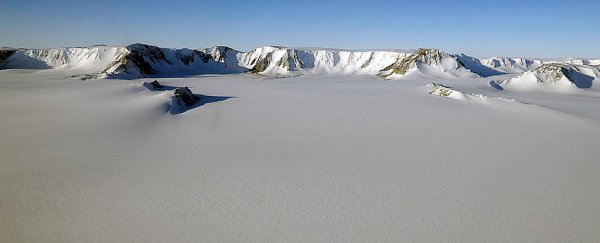Earlier in the year, we told you how a team of UK scientists had found evidence of the world's largest canyon network hidden under the Antarctic ice, and now they're on the brink of discovering what lies beneath the world's least explored continent.
Presenting their latest findings at the European Geosciences Union in Vienna, Austria last week, Martin Siegert of Imperial College London says scientists from China and the US have recently flown over the Antarctic region and gathered more radar data on the under-ice landscape. This new data should give us a clearer picture of the massive canyon system the team suspects is lying just under the ice sheet.
"We're meeting in May to look at the data," Siegert told Andy Coghlan at New Scientist. "It will be a very good test of our hypothesis about the lake and channels."
Perhaps the most exciting thing about the research – if everything pans out with the new radar data – is the opportunity to study life forms that could be in existence in the subglacial canyons and lake. Such organisms, if they exist, could have potentially been undisturbed for millennia in their very own fortress (okay, pool) of solitude.
The lake attached to the canyon system is thought to measure approximately 140 by 20 kilometres (87 x 12 miles) - very sizeable, but not quite comparable to Lake Vostok, the largest of Antarctica's subglacial lakes, measuring a gargantuan 250 by 50 kilometres (160 x 30 miles).
But the location of the new find, along the eastern coast of Antarctica in Princess Elizabeth Land, could make it a much more practical and accessible discovery for the purposes of scientific exploration.
The subglacial lake is just 100 kilometres from the nearest research station, which, according to Siegert, would make it much easier for the purposes of biological analyses.
"It's the last un-researched part of Antarctica, so it's very exciting news, but it's still tentative pending full confirmation," UK glaciologist Bryn Hubbard from the University of Aberystwyth, who wasn't involved in the research, told New Scientist.
